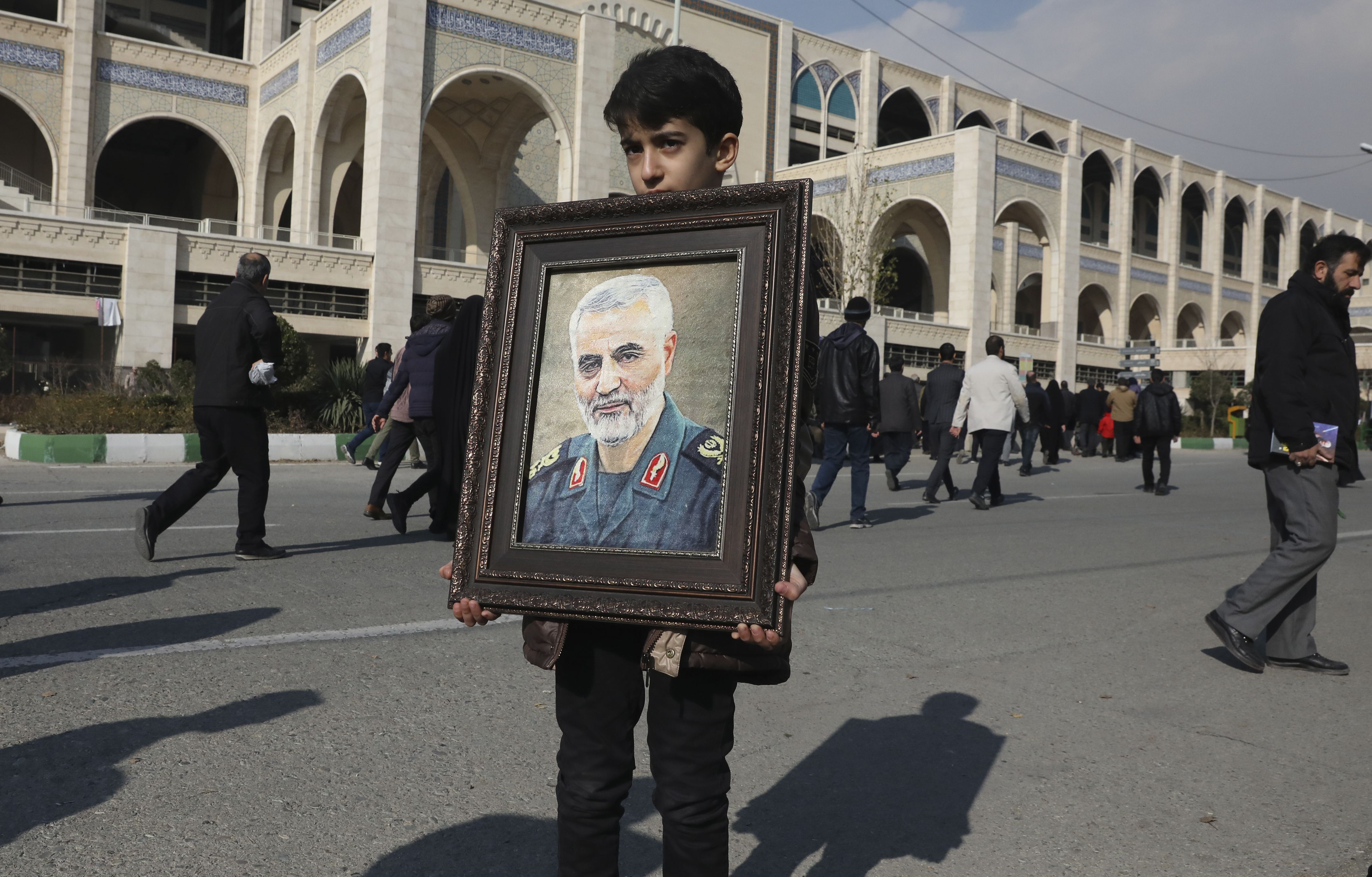In the hours after a U.S. drone strike in Iraq killed Iran’s most important military leader, Maj. Gen. Qassem Soleimani, a question has dominated discussion in the Middle East, in Congress and on social media. Could this lead to war between the United States and Iran?
In a sense, it already has. The killing of Soleimani, commander of Iran’s Quds Force, it elite security and intelligence unit, meets virtually any definition of an act of war, a categorical difference from the shadow conflicts that the United States and Iran have engaged in for years. To Iranian eyes, it is akin to Tehran ordering the death of the chairman of the Joint Chiefs of Staff.
But it remains uncertain where this attack, which follows weeks of tit-for-tat escalations between the two countries, will lead.
What follows is a guide to the risks of greater conflict between the United States and Iran, how the killing of Soleimani plays into those risks and what might come next.
Does this increase risks of conflict?
— Soleimani’s killing all but forces Iran to retaliate, most analysts say. That’s not primarily out of national pride or saving face but because of the fundamental drive of any state: self-preservation, which includes preserving its top leadership.
Killing one of those leaders is more than a slap in the face or a blow to military capabilities; it is a threat to the functioning of the state itself. Iran will feel compelled to retaliate, if only to demonstrate that killing its leaders will trigger counterattacks dire enough to deter the United States from doing so again. But it is difficult to predict how severe that retaliation will be, casting a cloud of uncertainty over the region.
— Iran has an extraordinarily difficult needle to thread. It will likely aim for counterattacks damaging enough to convince the United States that killing Soleimani was not worth it — a high bar, given his value and the far superior U.S. military strength — but not so damaging as to trigger an all-out conflict.
If Iran succeeds, the results could be costly to the United States and its allies but fall short of triggering outright war. But there is no way for it to know for sure what actions would meet both goals. And miscalculation could lead things to spiral out of control.
— The past month suggests that both the United States and Iran are already failing to properly calibrate their counterattacks. Each cycle of tit-for-tat escalations has, rather than forcing the other side to back down, instead led the other to ramp up, triggering another round more costly than the last.
In a sense, both sides have already lost control: It’s not as if the United States wanted its Baghdad embassy stormed or Iran wanted its Quds Force commander killed.
Is escalation inevitable?
— Another dynamic makes this cycle even harder to control: American intentions have at times been unclear. Official statements have described limited aims, such as deterring Iranian attacks. But senior officials have also described more sweeping goals like expelling Iran from the wider region or even toppling its government.
The uncertainty, along with the simple fact of overwhelming U.S. military might, puts pressure on Iranian leaders to plan for the worst. And it makes it harder for them to know when they can safely back down.
— Faced with a potentially existential threat, any state has two options: stand down and negotiate or hit the source of that threat hard enough to make it back down.
Iran chose to cut a deal most recently in 2015, when, to relieve U.S.-led economic sanctions, it surrendered the bulk of its nuclear program and permitted invasive inspections. But the United States had made that easier by seeking to demonstrate that Iran would not expose itself to existential threats by curbing its nuclear program. Monthslong negotiations allowed Iranian leaders to feel confident that the terms were in their interest and had wide international backing.
But President Donald Trump’s penchant for making sudden policy changes, disdaining international support and withdrawing from agreements, including that very nuclear accord, could shift Iran’s calculus. It may see gambling on retaliation as the safer option.
What could escalation look like?
— Iran is a regional power with far more sophisticated military capabilities than any country that the United States has gone to war with since World War II. It is a far cry from Saddam Hussein’s crumbling Iraq or armies of North Vietnamese irregulars. And it has invested years of preparation in enduring a possible war.
— Iran’s escalations are expected to be asymmetric, which means using proxies or small attack groups to target American forces, allies or economic interests. Iran has also shown a willingness to target civilians.
U.S. adversaries have had little success in using asymmetric attacks to force Washington to back down — just as the United States has never found a reliable strategy for deterring asymmetric attacks.
— The greatest risk may be that asymmetric Iranian warfare reaches a point in which the United States feels compelled to strike Iran directly. Analysts fear that this could lead to a direct, sustained war, but no one can say for sure how easily that might happen.
Iran could hardly win a shooting war with the United States, but its conventional forces would make any ground war costly and drawn out, analysts project. Iran also has extensive medium-range missiles that could strike U.S. bases or allies throughout the Middle East.
Would a conflict go wider?
— Iran could call upon proxy militias in Lebanon, Yemen, Iraq and Syria. But no governments are eager to join it in an outright war. U.S. allies in the region — Israel and Gulf States such as Saudi Arabia — would be unlikely to join unless dragged in by Iranian attacks.
— Iraq is coming under growing pressure to choose between the United States and Iran. Should American forces be expelled, Washington would lose a point of significant influence in Iraq, likely granting Iran greater sway in the country.
— While the possibility of an unintended slide to war is impossible to rule out, fears of World War III — a phrase that trended overnight on social media — are overblown. Russia and China might strenuously object to U.S. attacks, but they are no more likely to join the fight than they were when the United States invaded Iraq or helped to topple Libya’s government.
Is either side ready for what’s next?
— The suddenness of this escalation makes it difficult to know how fully Trump’s administration has thought through and planned for the potential consequences.
Early signs suggest that Trump’s trademark impulsiveness may have played a role. It is unclear whether European allies were notified in advance. Even Israeli leaders appeared to scramble in response.
— Iran’s willingness to take risky actions — perhaps driven by a perception that the scale of the U.S. threat leaves it with no other choice — increases the danger to all sides.
The greatest stakes are not purely political. It can be easy for Americans to forget that Iran is not just an adversary, it is also home to over 80 million civilians, many of whom are already suffering under sanctions. Millions more across the Middle East, where proxy fights are likely to play out, would also be at risk. The burdens of any conflict are likely to fall overwhelmingly on those regular families, as they always do.











